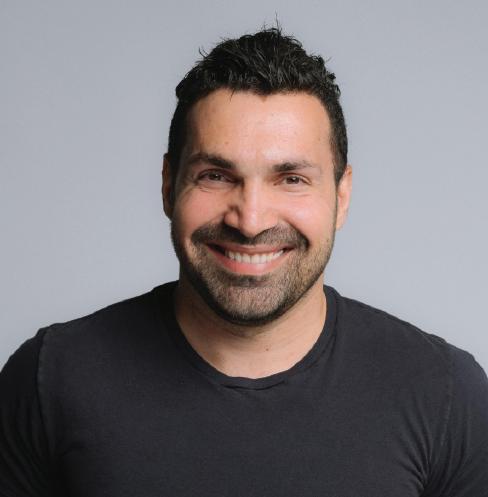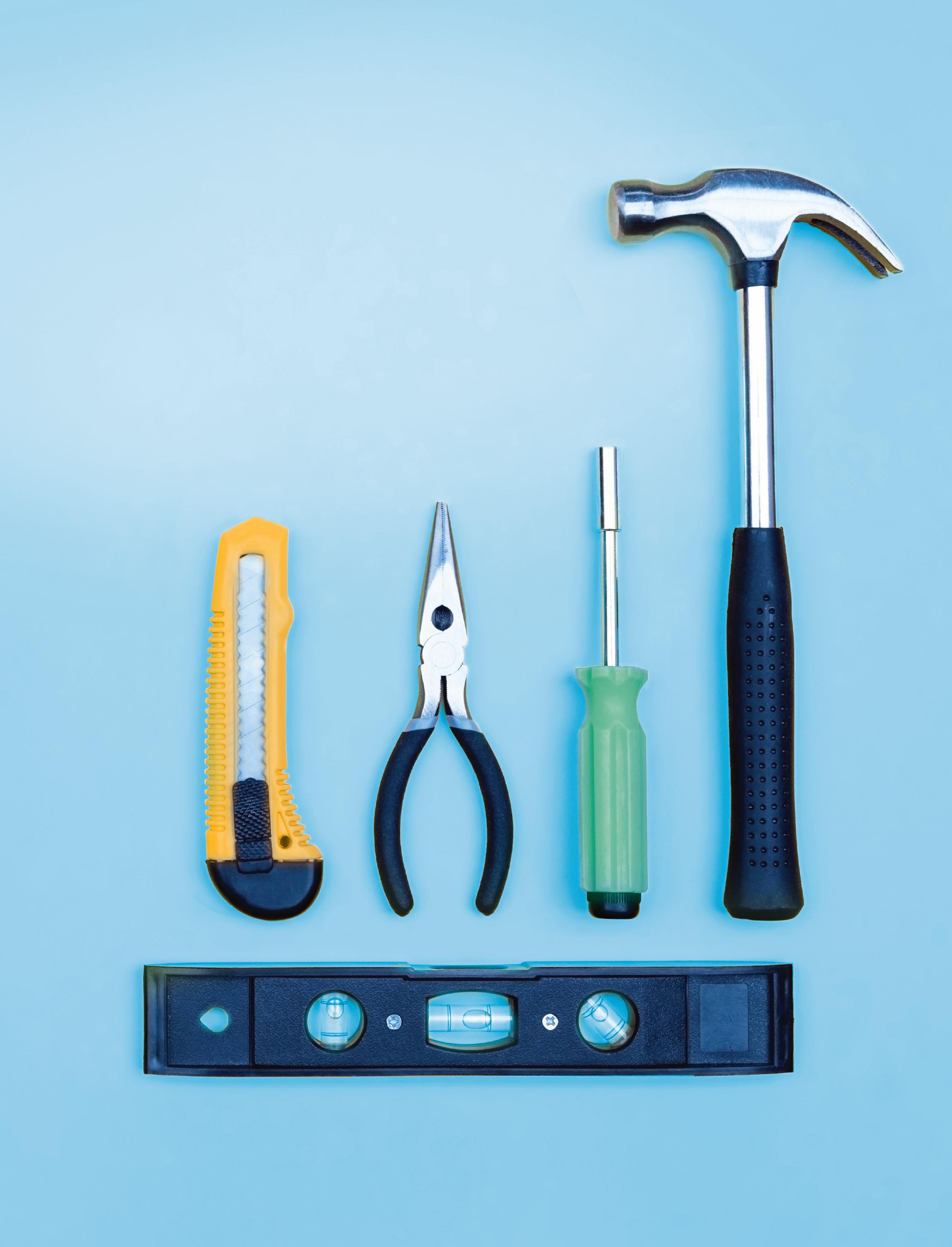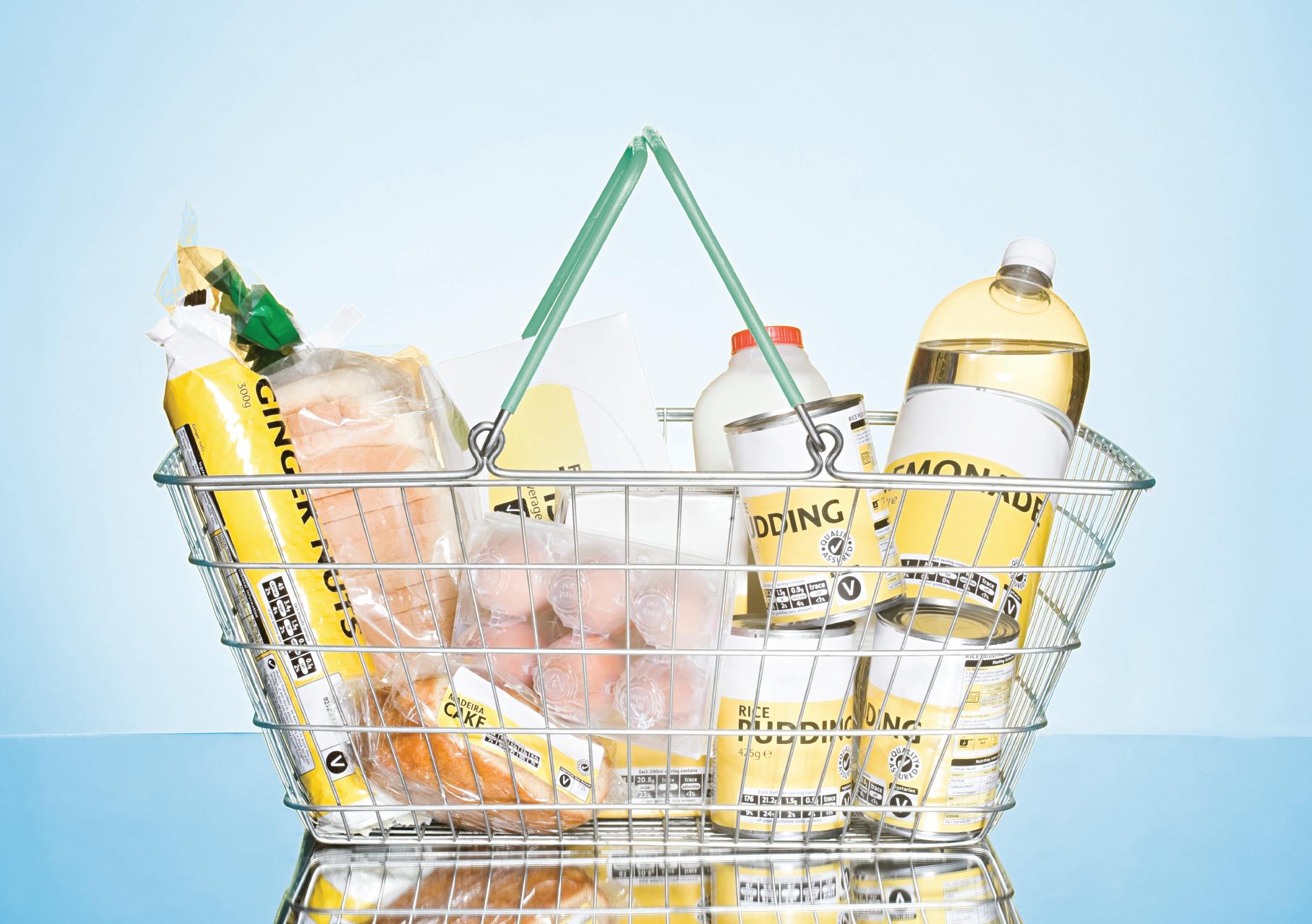
23 minute read
BurgerFi Expands After SPAC
Newly Listed BurgerFi Serves up Sustainable Beef to Clean-Eating Clientele
The Florida-based “better burger” chain focused on delivery technology, ghost kitchens and curbside pickup to boost business in 2020
Advertisement
By Editorial Staff
Last year was undoubtedly difficult for restaurants. Many saw closures or declines in sales due to the coronavirus pandemic. Some 90,000 restaurants shuttered longterm or for good, according to a May report from the National Restaurant Association. And many are still down in revenue and staff by $290 billion and 1.7 million jobs, respectively.
Some fast-casual concepts that primarily focused on delivery and take-out pre-pandemic, or had unique concepts, managed to thrive. BurgerFi International, a Florida-based fast-casual chain focused on clean beef, recently secured a SPAC investment, opened several new ouposts and plans to continue expanding.
The company was acquired by Opes Acquisition Corp, a special purpose acquisition company, in December. The transaction took the business public on the Nasdaq stock exchange and valued it at $100 million. CEO Julio Ramirez says the company’s focus on the “better burger” is what drew investors to the business. “[BurgerFi] is uniquely positioned to appeal to consumers’ increasing needs and wants for fresh, all-natural delicious food sourced from quality suppliers with responsible practices,” he says.
BurgerFi’s focus on delivery, ghost kitchens, as well as app and technology development, helped the business grow in 2020. The company opened 11 new locations last year and plans to open 30 more this year. It also started nine delivery-only ghost kitchens. “We focused on optimizing our off-premise ordering channels to allow a seamless experience for our guests,” Ramirez says. The company started offering curb-side pickup on its website. Digital and delivery sales grew 64% in 2020.
BurgerFi’s revenue rose by 32% in the first quarter compared to the same quarter last year. New store openings and digital sales drove most of the growth, the company’s earnings report said.
Since going public in December, the stock has declined from about $16 per share to $10 per share as of mid-June, though it is still trading at a healthy 5x multiple on revenue.
Lion Point Capital, a New Yorkbased hedge fund, is one of the largest shareholders in the business, according to Yahoo Finance, with a 15% stake.
Looking ahead at expansion, Ramirez has his sights set both near and far. “We will continue to pursue our cluster market strategy and aggressively develop company and franchise restaurants primarily in Florida and throughout the Southeast and Eastern seaboard,” Ramirez says. New locations will include traditional brick-andmortar restaurants, as well as airport locations and ghost kitchens.
BurgerFi has also been expanding in the Middle East. In January, it announced six new locations in the region. “The population and demographics in the Middle East fall within our target market,” Ramirez says. “The average age is about 32. There are many families with many children. They have high income and enjoy eating out and delivery,” he adds.
BurgerFi has earned several accolades in recent years, including being named to the top spot of Fast Casual’s Top 100 Movers & Shakers in May this year. The business is set to join the Russell Microcap Index at the end of June. //

MORE ONLINE
Find more interviews at middlemarketgrowth.org.
Dr. Alex Mehr
Co-Founder and CEO, Retail Ecommerce Ventures
Dr. Alex Mehr is the co-founder and CEO of Retail Ecommerce Ventures (REV), an investment firm that buys distressed brands and transforms them into e-commerce success stories. REV’s holdings include Radio Shack, Pier 1 and Dress Barn, among others. Mehr recently appeared on ACG’s GrowthTV to discuss the challenges that brick-and-mortar retailers face and how to determine their value in today’s disruptive environment. The following is an edited and condensed version of that interview, which is available in full at acg.org/growthtv.
QBased on consumer behavior and overall market trends in retail, how strong is the deal pipeline for the remainder of 2021, and will there be more distressed activity?
AThe pace of bankruptcies that happened last year probably will not happen this year. But the thesis is still valid. When there’s a technological shift, there are companies that are on the right side of it, and there are companies that are left behind. Sometimes that technological shift happens all of a sudden, like in the pandemic, or during normal years it is a trend that’s happening, but it doesn’t bunch up like it did last year.
It’s not just brick-and-mortar to e-commerce. There have been all sorts of technological shifts, or changes in business modality, that have happened over centuries. And there are always companies that are left behind. We’re looking for those companies that are left behind, but that have really good brands. We purchase the brand, and then we do that transition to e-commerce ourselves.
QWhat is the biggest mistake you see businesses make as they add e-commerce capabilities?
AA lot of times when I walk into these companies, I see that they are operating their e-commerce site as if it’s another store, which it’s not. E-commerce is really not the same as running a store. It takes a different mentality in terms of merchandising and overall strategy. In terms of logistics, technology and marketing, everything is different about it.
A lot of times, e-commerce is an afterthought. A company may decide that it’s going to sell through e-commerce because it feels it has to, but it’s such a small percentage of the business that the board doesn’t really appreciate it, and the CEO is motivated by their own compensation package. If there’s this small thing that maybe pays off in five years, it isn’t really relevant to the CEO for that year’s bonus. The CEO is going to be focused on the thing that moves the needle now, and in doing so, e-commerce always becomes an afterthought. It’s a pattern that I’ve seen over and over again. And it just doesn’t work out that way.
QWhen REV is looking at a brand that’s struggling and you’re considering buying it, how do you determine its value in an environment where everything is changing so quickly?
AI think the interesting thing about REV is that we have used this exact formula of purchasing a strong brand and launching it as e-commerce-only quite a few times. We purchased nine brands in 2020. Because of that, I now have a data set of what the brand was beforehand, in terms of the number of people that went and purchased on a monthly basis—it’s called monthly active users—based on the strength of the brand itself, and based on category. We’ve purchased brands in home goods, fashion, electronics, sporting goods and other verticals.
Because of that, I can look at data in a table and say, this looks like it’s similar to this other brand, or it’s similar to this one, but twice as big. Based on that, I know what I can expect post-transition. And then I work backward to the price. That’s a specific advantage that we have—we can price these rather accurately now. //
Now Playing: Middle Market Trends
GrowthTV highlights top deals, covers newsworthy trends and features in-depth conversations with middle-market investors and business leaders to help foster growth and innovation.

STREAM THE LATEST AT ACG.ORG/GROWTHTV
© 2021 Association for Corporate Growth. All Rights Reserved.
CAN THE PANDEMIC DARLINGS Sustain THEIR
Growth?

BY KATHRYN MULLIGAN
The COVID-19 outbreak sparked an economic reshuffling unlike recessions that came before it. Mass layoffs in travel, hospitality and other hard-hit industries led many consumers to cut back on spending. Those that kept their jobs redirected their dollars toward new activities or in-home entertainment.
The new hobbies and spending habits decimated some sectors and boosted others. Industries that were hit hard— like travel, concerts and restaurants—are now starting to show signs of life. But what about the industries that flourished during the pandemic? Can they continue to climb?
Technology is the most-cited example of a sector elevated by the stay-at-home orders. From Netflix to Zoom, tech-enabled entertainment and communication platforms will almost certainly remain a fixture of daily life. But technology wasn’t the only industry to thrive.
Living spaces became a greater focus for people spending more time at home, fueling a burst of enthusiasm for renovations, upgrades and new furniture. Home improvement businesses reaped the rewards.
So did private-label food and beverage suppliers. Limited capacity at restaurants and hesitant diners led to more foot traffic at grocery stores. As shoppers stocked up on canned foods and staples, many were watching their wallets and opting for private-label goods over branded products.
Price sensitivity also may have contributed to the growing interest in secondhand clothing, as did climate consciousness. The pandemic coincided with a spate of wildfires, hurricanes and flooding that drew some consumers toward more sustainable options, including recycled apparel and accessories.
Home improvement businesses, private-label foodmakers and fashion resellers each have had a good run, so we set out to explore what comes next for them: What happens when all the bathrooms are remodeled, restaurants return to full capacity, and clothing stores launch their new fashion lines?
Was the pandemic just a blip for these three industries, or a launchpad for lasting growth? //
Kathryn Mulligan is Middle Market Growth’s editor-in-chief.
Home Improvement
AFTER LOCKDOWN
BY HAL CONICK

During the pandemic, Susquehanna Private Capital made its first two investments in the middle-market home improvement sector. It invested in Mosquito Authority, a mosquito control franchise business, as well as Premium Service Brands, which has franchised brands that specialize in services such as painting, housekeeping and garage door repair.
Susquehanna wasn’t alone in its investments—American consumers and investors alike spent money on home improvement during the pandemic. Despite the U.S. economy shrinking by 3.5% in 2020, the home improvement and repairs market grew by more than 3%, to $420 billion, according to the “Improving America’s Housing 2021” report by the Harvard Joint Center for Housing Studies.
Mergers and acquisitions slowed across the building products market in 2020, according to investment bank Capstone Partners. But Capstone reports that midway through the year, strategic buyers and private equity investors resumed activity and M&A rose more than 100% from the second to third quarter.
Both companies Susquehanna invested in held steady in their growth over the pandemic, adding more franchises. But Kyle Squillario, co-head investor at Susquehanna, believes that the home improvement story is bigger than the pandemic. “Even pre-pandemic, we were bullish on home services as a category,” Squillario says.
Squillario has a hypothesis as to why the home improvement boom will continue: The housing market is getting younger. Millennials and Generation Z are now huge factors in buying houses, and he believes that will mean good things for any home services company for years to come.
A millennial himself, Squillario remembers seeing a survey that found that 32% of millennial dads reported not owning a hammer, something only 7% of baby boomers could say. If younger generations relied on professionals for other services, he believed that would hold consistent with homes. If you outsource other skills of expertise in your life, he reasons, why would you try to install your own drywall?
“We’re the do-it-for-me generation as opposed to the do-it-yourself generation,” he says.
AH Equity, located in Panama, also made its first investment in the home improvement
industry—and the U.S. market—during the pandemic. It invested in the North Carolina furniture store Hickory Park Furniture Galleries after being introduced by a broker in July 2020. The furniture dealer has increased its revenue amid the coronavirus outbreak, an unexpected tailwind, say Rafael Quinn and Lucas Valderrama, co-managing directors of AH Equity.
But for Quinn and Valderrama, that tailwind was simply a bonus. They believe that the industry’s potential stretches far beyond the pandemic.
“One of the first things we do when we look at a company or an industry is visualize this industry 10 years down the line,” Quinn says. “We obviously believe people are still going to be using sofas, using dining room tables, [but] the method that they use to buy that furniture could change.”
RAFAEL QUINN
Co-Managing Director, AH Equity
Case in point: More than 30% of Hickory Park Furniture Galleries’ sales now come from digital sales, a number they believe will increase in the coming years. Surface magazine reports that 14% of all online sales will be furniture purchases by 2022.
But like Squillario, AH Equity had an even bigger reason for investing in Hickory: The North Carolina population boom. The state’s Office of State Budget and Management said that North Carolina gained nearly 100,000 new residents in 2019 and 2020, the fourth biggest grower of all states. North Carolina’s booming
population even gave it a new seat in the House of Representatives.
“A short bump in sales because of the pandemic is not going to drive our overall investment decision,” Quinn says. “It might help get us over the hump to make a decision, but it’s not going to be the driving force of why we do something.”
PROJECTED STRENGTH
The aftermath of the pandemic won’t have much of an effect on Susquehanna’s businesses, according to Squillario. He expects them to keep growing. But he does believe that the pandemic has had the effect of attracting other investors.
“My main regret is that the virus has probably drawn more attention to the industry than there had been prior,” Squillario says.
And there’s good reason for that attention. According to Brand Essence Research, the global home improvement market is currently worth $849.3 billion, but it’s projected to grow 4.5% a year until it reaches $1.2 trillion in 2025.
It seems that there’s more than a pandemic bubble to the current home improvement boom. Quinn, Valderrama and Squillario all expect their businesses to become even stronger after the public health crisis abates. Squillario notes that these businesses offer recurring services—he avoids home improvement companies with revenue based on projects. Rather than one-and-done deck jobs, there will be many houses to clean, rooms to paint and mosquitos to spray.
Across the home improvement market, Squillario says that he’ll be interested to watch whether other investors diversify what they buy. Although HVAC or plumbing businesses offer investors a lucrative recurring revenue model, he wonders whether buyers could be scared off by the talent shortage in these industries, or the need for licensure.
He also questions whether investors will target project-based businesses, like roofing and restoration, which have fewer returning customers than furniture sellers or mosquito spraying companies.
For now, investors seem satisfied to participate in a market that has strength beyond bored homeowners sprucing up their houses—particularly in growing population centers like North Carolina, where AH Equity’s furniture business is located.
“It’s a fortuitous event to have the little mini bump we’re getting and the increase in spending [on] that consumption,” Valderrama says. “That was helpful, but I would say it was more important to have seen that long-term trend that we’re seeing in the state, because that’s what will carry us for the next five to 10 years.” //
KYLE SQUILLARIO
Co-Head Investor, Susquehanna Private Capital
Hal Conick is a writer based in Chicago.
PENCHANT FOR Private Label
BY JOANNE CLEAVER

Private-label groceries were out of sight but well within reach for cost-conscious consumers who shopped virtually during the pandemic. Now, as shopping habits realign with the rush to reopen the economy, privatelabel suppliers see a rare chance to redefine themselves.
In hopes that consumers’ newfound enthusiasm for home cooking will continue, these third-party food and beverage manufacturers are experimenting with new recipes, packaging and modes of marketing for their products, which sell under retailers’ house brands.
Still, their ambitions will only go as far as a fragmented supply chain will take them, say investors and consultants.
Some pandemic preferences delivered unexpected lifts, says Robert von Furth, managing director of investment banking for Chicagobased Stout, an investment banking and advisory firm.
House-brand baked goods and familiar frozen foods, like lasagna, delivered comfort, thrift and convenience to stressed-out, overworked, homebound Americans over the past year and a half. Convenience foods designed for entertaining and eating on the go—such as store-brand trays of cut vegetables and single-serve fresh lunches—withered under bans on socializing and traveling.
All of that is reversing as management of the COVID-19 public health crisis morphs from urgent to chronic, says von Furth.
The focus on correcting bad habits tolerated during the lockdown will be a boon for house brands that deliver formulations that celebrate health and wellness with flair, predicts von Furth. Consumers are in an experimental frame of mind, and that means that private-label goods have a moment to assert their benefits for wallets and waistlines.
House brands were a bit of a port in the COVID-19 storm, as borne out by market share figures released in January by IRI, a Chicagobased market research firm. It found that major brands’ share eroded by 1.3% in 2020, due in part to chaotic supply chains and consumers’ penny-pinching.
While the overall push toward at-home cooking and consumption propelled consumer packaged goods to a 10.3% increase in sales, house brands captured 18% of that growth, according to IRI analysis, translating to a 0.2% increase in share for private labels. Alcohol, frozen food and “center store” shelf-stable pantry staples enjoyed the biggest lift—especially, as IRI noted, when shortages sent consumers to “pick up whatever was available.”
The big story for 2021 will be how loyalties realign along with the supply chain, according to consultants. Pandemic lockdown shortages and glitches are still being untangled, says William Madden, co-founder of a food and beverage consulting consortium based in Chicago.
One of the biggest clogs is located in Americans’ pantries. Facing accumulations of canned and shelf-stable goods, even those who are eager to return to dining out are likely to work through their stockpiles, Madden predicts.
That gives private-label marketers a little breathing room to re-establish their relationships with producers, he says. “It will take about three months for private label to secure their spot in the supply chain,” Madden says.
Higher end store brands, like Meijer and Kroger, asserted their spots atop the food chain, claiming capacity to fulfill the torrent of consumer demand. “It was the commodity
WILLIAM MADDEN
Co-Founder, Whole Brain Consulting
private-label suppliers that got crushed,” says Madden. “Everybody thought that the demand for the plain labels would collapse, but people started looking at the amount of money they were spending eating out. Suddenly, they had money to buy the higher quality goods and those premium products all saw fantastic growth. That’s what people have now in their pantries.”
And, as consumers flock back to the aisles, private-label brands have a rare chance to reintroduce themselves with new twists on flavors and packaging at sweet price points. The newfound novelty of shopping in person will likely open a brief but lucrative window for consumer discovery, say consultants.
The abrupt shift to online grocery ordering and home delivery derailed the traditional private-label mode of marketing: winning on price, side-by-side on the supermarket shelf, explains Ricardo Cordero, CEO and founder of Ricardo Food Group, Inc., a New York City-based firm that invests in, develops and consults for private-label suppliers.
Enthusiasm for private label will also snap back as consumers giddily resume much-loved grocery shopping habits. “When I log in to Instacart, I see what they want me to see,” Madden says. “When I go to the grocery store, I see what I want to see. As consumers hit the stores, they’ll see those price differentials.”
Store leadership is counting on private-label cache to offset the anticipated drop in grocery revenue as at least some consumers start eating out more. “The private-label profit margins are what stores need to weather the drop in sales overall from the snap back to eating out,” Madden says.
Now, private-label goods are determined to reclaim “cart awareness” with consumers who both resorted to comfort foods and experimented with cooking and baking while at home during the pandemic, Cordero says.
If working from home continues, that won’t be a tall order, because consumers will cultivate new habits and preferences as they integrate familiar brands into workdays that are still contained to home offices.
“The more you associate your brand with daily life, that carries over to private label and store loyalty,” Cordero says.
The emerging national obsession over shedding pandemic pounds is likely to merge with merchants’ determination to introduce organic, high-protein, low-carb and other health-signaling formulations to consumers who want to trim costs along with their waistlines.
As supply chain kinks straighten out, new product ideas that have been percolating will rapidly roll out, Cordero predicts.
“A lot of new entrepreneurs who started companies with private-label goals—they had time to work on their ideas,” he says. “And direct-toconsumer marketing wins during the shutdown showed them the loyalty that you can build with private labels.” //
Joanne Cleaver has been covering entrepreneurship and business growth for over 30 years for national media, as both a staff and freelance journalist.

Recycled Fashion’s
LONG RUNWAY

The old tune “Second Hand Rose” that laments “even clothes I’m wearing someone wore before” doesn’t apply to today’s consumers who are proud to purchase previously worn luxury fashions and, as a result, are supporting a fashion resale industry that’s growing by leaps and bounds.
The old attitude that looked askance at wearing secondhand apparel is changing as more consumers purchase pre-owned, high-end fashion items as a way to keep discarded clothing from clogging landfills and to lead a more sustainable life.
The pandemic gave the already growing resale market a lift when brick-and-mortar retailers were forced to close throughout the U.S. and consumers flocked online to shop.
Fashion resellers that were already operating online or were able to move online quickly benefited during the pandemic, and fashion resellers as a whole continued to experience growth that had begun even before the public health crisis.
“The resale industry in general is growing at a faster rate than general retail,” says Carolyn Thompson, president and CEO at Resale Global. “That’s because of consumer demand for sustainable shopping opportunities. People want to be able to reuse things and live a sustainable lifestyle.”
Resale Global offers technology that allows resellers to improve the efficiency of their businesses and reach more customers. Users are able to cross-post a single entry of an item for sale across various websites and social media platforms, including Facebook, Instagram, eBay, Poshmark, Tradesy and others.
ThredUp, an online consignment and thrift store that publishes an annual report on the industry, is similarly bullish on fashion resale. It expects the online secondhand market to soar 69% between 2019 and 2021. At the same time, it projects that the broader retail sector will shrink 15%.
ThredUp expects the size of the secondhand fashion market to reach $64 billion by 2025, with $28 billion coming from the traditional thrift and donation sector, and $36 billion coming from resale. By comparison, the total market was $28 billion in 2019, with $7 billion coming from resale.
Interest in the industry is evidenced by the IPOs of resale marketplaces Poshmark in early January and The RealReal in 2019, and by an investment by luxury conglomerate Kering, the owner of brands Gucci and Laurent. Kering took a 5% minority stake in French luxury resale platform Vestiaire Collective in March.
Ariel Ohana, co-managing partner of Ohana & Co., an independent investment bank that acted as exclusive financial advisor to The RealReal during its growth equity financing from private equity firm Great Hill Partners in 2017, says even major luxury retailers no longer see fashion reselling as a threat.
“Luxury retailers used to hate seeing their products being sold at a discounted price and secondhand,” he says. “Now they realize that those
[resale] companies actually are allowing their old customers to buy more, and they’re bringing in new customers because the people who buy secondhand aspire to one day buy original.”
Another business serving the fashion resale industry is LePrix, an online B2B and B2C platform for businesses to sell and source preowned luxury items in the United States.
Elise Whang, CEO and co-founder of LePrix, says the fashion resale industry is made up of many mom and pop businesses, which she adds can sometimes be a plus.
“Small businesses have an advantage,” she says. “They are leaner and can pivot faster. We saw some businesses that really got creative during the pandemic.”
ELISE WHANG
CEO and Co-Founder, LePrix

Whang cites one seller that sold special-event wear, bridal and evening gowns prior to the pandemic. It switched to high-end hand bags when weddings and other events were canceled following the coronavirus outbreak. The company will continue to offer handbags and hopes to capitalize on selling special-event dresses when in-person events return.
Whang’s outlook is upbeat, and she believes fashion resale presents an attractive investment opportunity.
“Our opinion is that the M&A environment is really hot right now, especially because of how well the resale industry has continued to grow and how strong it is,” she says. “It’s a huge industry. We predict that there will be consolidation—M&A—in the next year to three years. This industry is maturing.”
Frank Glover, senior director of TEDCO, the Maryland Technology Development Corporation, which invests in and helps grow technology for entrepreneurial innovators, also believes in fashion reselling as an investment opportunity.
“When you see IPOs and you see them perform relatively well, that’s certainly an indication that there is investment interest in this industry,” Glover says. “And you can point to the demand in the market. Where there is demand, people are going to invest. We’re a demanddriven, consumer-driven economy.”
Glover says that businesses that provide infrastructure or solve a problem are compelling. LePrix, for instance, operates an arm of its business that offers resellers access to inventory of high-end products that can be difficult to source.
“Regardless of industry, I like to invest in big and growing market opportunities,” Glover says. “And then I like to look for the problems that a business solves. Certainly, one of the pain points [for the resale industry] is getting quality inventory across this market, because there is big demand. Resellers need to keep up with that demand.”
Knowing that her company is addressing one of the industry’s pain points is a positive for Whang, whose company is attracting interest from potential investors.
Despite such activity, she is focused on serving her customers and contributing to a more sustainable fashion industry.
“Our first priority is to create value for our customers and help power the circular economy, but we are open to ideas if the visions align,” she says. //
ARIEL OHANA
Co-Managing Partner, Ohana & Co.
Annemarie Mannion is a former reporter for the Chicago Tribune and a freelance writer who covers business.









